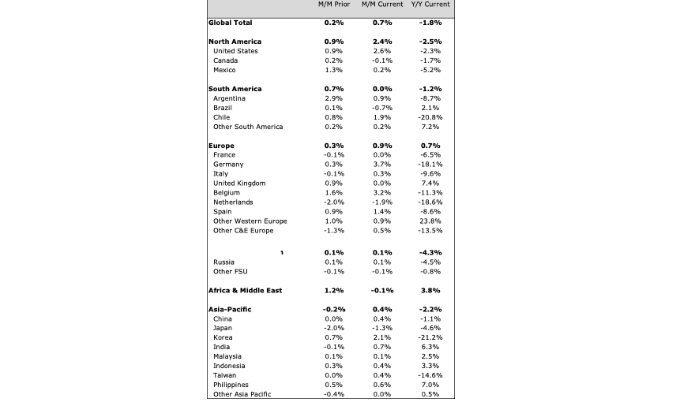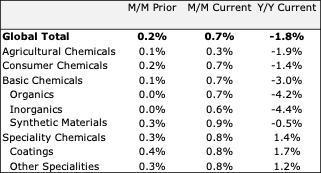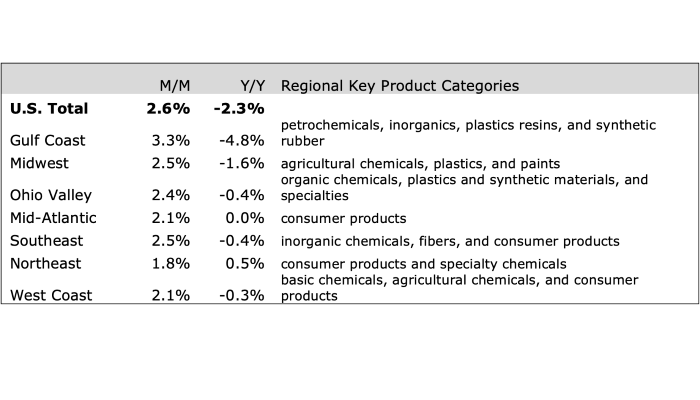The American Chemistry Council reports that the US Chemical Production Regional Index (US CPRI) rose 2.6% in March.
May 5, 2023

According to the American Chemistry Council (ACC), the Global Chemical Production Regional Index (Global CPRI) rose by 0.7% in March following a 0.2% increase in February.
The US Chemical Production Regional Index (US CPRI) rose 2.6% in March. Both indices are measured on a three-month moving average (3MMA) basis to reduce month-to-month volatility.
"During March, chemical output increased in all regions except Africa & Middle East. Despite these gains, chemical output continued to be lower than last year’s global production numbers," said Chief Economist Martha Moore.
The 2.6% gain in March in the US reflects a bump in chemical production that followed a tough Q4. “Producers were challenged at the end of the year by customer destocking and winter-weather related disruptions,” Moore added.
The gain in March reflects higher chemical production in several major producing countries, including the US, China, Russia, and Germany.
Global output is up in all segments, with the largest gains in synthetic materials, including plastic resins, synthetic rubber, and manufactured fibers.
The Global CPRI measures the production volume of the chemical industry for 55 key nations, sub-regions, and regions, all aggregated to the world total. While most data are seasonally adjusted at source, some are adjusted using the U.S. Census Bureau’s X-12 model to present data comparable to the United States. In a few cases, ACC creates indices of production based on actual production data weighted according to industry structure. The index uses the total value added as a proxy for individual country weights to arrive at the total. This method accounts for the changes in each country’s share relative to global production, which is more reflective of ever-changing global production dynamics.
Global Chemical Production by Country/Region, Percentage Change
(Seasonally adjusted, 3-month moving average)

The Global CPRI measures production activity generally consistent with the overall industry nomenclature of NAICS 325 (less pharmaceuticals) and the EU NACE 20 industries. The index measures the production of soaps and detergents, personal care products, fertilizers, and other downstream products in addition to measuring inorganic chemicals, organic chemicals, plastic resins, synthetic fibers, synthetic rubber, adhesives and sealants, coatings, and other specialty chemicals. Production of pharmaceuticals is excluded.
Global Chemical Production by Segment, Percentage Change
(Seasonally adjusted, 3-month moving average)

According to US CPRI, output in the US rallied in March and was higher than a month ago in all regions, with the largest gain in the Gulf Coast, home to much of the nation’s basic industrial chemical and synthetic materials capacity.
In the US, output of plastic resins, organic chemicals, industrial gases, coatings, adhesives, crop protection chemicals, synthetic dyes & pigments, synthetic rubber, consumer products, and other specialty chemicals were higher. Gains were offset by lower production of synthetic rubber and fertilizers.
The US CPRI was developed to track chemical production activity in seven regions of the United States. The U.S. CPRI is based on information from the Federal Reserve, and as such, includes monthly revisions as published by the Federal Reserve.
U.S. Chemical Production Regional Index, Percentage Change
(Seasonally adjusted, 3-month moving average)

About the Author(s)
You May Also Like




